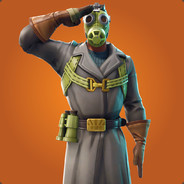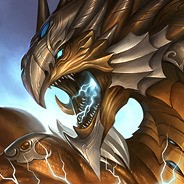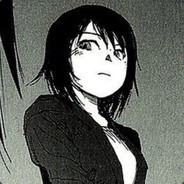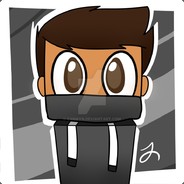Unit 12. Science and technology.
I. Reading
№1. Before you read the article in exercise 3, look at sentence beginnings 1 – 6 after the
text. Try to complete each statement with your own ideas. (Your ideas don't have to be based
on the article.)
№2. Read the text quickly and find the words or phrases that match the definitions below.
Definition. In the article
a. give up some of your demands or expectations to meet
the wishes of others
b. the time when the roads are full of traffic because of
people travelling to or from work
c. slowly begin to cover more and more space
d. places used for a particular purpose o r activity
e. together; closely connected
f . form a border around an area or border on to an area
№3. Read this newspaper article about our changing world. Match the sentence
beginnings 1-6 with the endings a-g so they express the main ideas in the text. Write the
numbers before the endings. There is one ending you won't need.
The Rise Of The Machines
The changing face of our motorised world
A. Cars have given us freedom. We can go wherever we want to go, whenever we want to
go. They have also given us independence. We don’t have to compromise or consider where
other people wish to travel. Cars provide us with a personalised, door-to-door transport
solution that' s always available. But they also change the world we live in.
B. If you had to consider the impact of cars on your town, firs t of all you would probably
think of traffic jams and the difficulty of getting about in a car in the rush hour. Or maybe
you would think of pollution, and how the toxic fumes erode the facades of buildings along
busy thoroughfares. But there is a much bigger change we almost never think about. Cars
change the face of the towns themselves.
C. As people buy more and more cars, roads keep getting widened to accommodate the
increasing volume of traffic. They encroach up on formerly green spaces: lawns, flower
beds, or trees that used to line the roads. They expand until the pavements become a thin
strip along the foot of the buildings, further narrowed b y the parked cars that invade the last
remaining inches of pedestrian space.
D. We all enjoy the facilities that shopping malls, multiplex cinemas and enormous
entertainment complexes bring because we can use our cars to get to them. They are
efficient, convenient, and fast. At the same time, we are saddened by the loss of our local
groceries, our beautiful Art Deco picture houses and the friendly neighbourhood community
centres. What we must also realise is that these changes go hand in hand, and we are to
blame.
E. Preferring our freedom to sharing transport with others, we get into our cars to get to our
workplaces, to do our shopping, to go out to the theatre, and many would even drive to go
for a walk in the fields. And wherever we drive to, we have to park, too. Parking spaces are
huge areas of land used up by empty cars waiting for hours on end for their passengers to
return. What used to be a vast grassy meadow now becomes a small muddy field (crisscrossed by the tyre-tracks of vehicles that use the field to take a shortcut out of the parking
lot) fringed by a square of concrete and tar. And what cars have changed will never be like it
used to be, ever again.
1. Among the effects of using cars, we usually …
2. The reason we find shopping and entertainment centres convenient is that we can …
3. Older shops and services in towns …
4. Cars have enabled us to …
5. Even outside the cities, green spaces are beginning to …
6. Streets in our towns …
____ a. drive to them.
____ b. change to provide more room for motor vehicles.
____c. close down because the new facilities take their place.
____d. travel freely and independently of others where we like.
____ e. realise that the effects of increasing car ownership are irreversible.
____f. regard traffic congestion and pollution as the most important.
____ g. be replaced by parking lots for cars.
№4. Now match the sentences above to the paragraph (A-E) in the text which contains
information about them. Write the letter of the paragraph in the box after each sentence.
203
390
Ответы на вопрос:
1. was asked (подлежащее+be+глагол в 3 форме, но глагол "to ask" - правильный, к нему просто добавляешь окончание "ed"; past simple, показатель yesterday) 2. were bought (по тому же принципу, что и в 1, только множественное число)3. have been visited (have been+ глагол в 3 форме, "to visit" - правильный, добавляем просто окончание "ed"; present perfect, потому что в данном предложении результат)4. is caused ( подлежащее+be+глагол в 3 форме, "to cause" - правильный, окончание "ed"; present simple) 5. is called (подлежащее+be+глагол в 3 форме, глагол "to сall" - правильный, окончание "ed"; past simple , показатель last week)6. are prescribe ( подлежащее+be+глагол в 3 форме, "to prescribe" - правильный, окончание "ed"; present simple)
Реши свою проблему, спроси otvet5GPT
-
Быстро
Мгновенный ответ на твой вопрос -
Точно
Бот обладает знаниями во всех сферах -
Бесплатно
Задай вопрос и получи ответ бесплатно

Популярно: Английский язык
-
Write 5 question about what your friend did yesterday. !...
 kghjg05.08.2022 17:58
kghjg05.08.2022 17:58 -
Написать сочинение-эссе на тему технология стала большей частью моей...
 Алексей0803200507.05.2020 18:18
Алексей0803200507.05.2020 18:18 -
Поставьте 2 специальных вопроса а и напиши предложения по языку вот предложение...
 Viktoria001112.06.2021 21:26
Viktoria001112.06.2021 21:26 -
Откройте скобки для востановления that moring when i (wake) up after...
 sofavorobyova1702.10.2020 19:46
sofavorobyova1702.10.2020 19:46 -
Переведите пож-та с на в страдательном залоге: 1. новые дома строятся...
 naziflashru20.11.2021 04:09
naziflashru20.11.2021 04:09 -
Нужно составить общие вопросы по my name is анн.мне seventeen years....
 kusrik28.02.2023 11:45
kusrik28.02.2023 11:45 -
Рок» X ☆ naurok.ua/round/122 6 7 8 Hello! I m Maggie. This is my house....
 Владс11928.07.2020 10:06
Владс11928.07.2020 10:06 -
Изложите Ваш отчёт о возможной зарубежной деловой поездке...
 makskatya2011.12.2021 06:04
makskatya2011.12.2021 06:04 -
составить английское слово из всех букв, вот буквы: TYLHMOORP...
 Сяй23.07.2020 15:21
Сяй23.07.2020 15:21 -
Рассказ по теме ( напишите письменно) Holidays.120 слов. С использованием...
 Derbershto39724.08.2020 10:45
Derbershto39724.08.2020 10:45

Есть вопросы?
-
Как otvet5GPT работает?
otvet5GPT использует большую языковую модель вместе с базой данных GPT для обеспечения высококачественных образовательных результатов. otvet5GPT действует как доступный академический ресурс вне класса. -
Сколько это стоит?
Проект находиться на стадии тестирования и все услуги бесплатны. -
Могу ли я использовать otvet5GPT в школе?
Конечно! Нейросеть может помочь вам делать конспекты лекций, придумывать идеи в классе и многое другое! -
В чем отличия от ChatGPT?
otvet5GPT черпает академические источники из собственной базы данных и предназначен специально для студентов. otvet5GPT также адаптируется к вашему стилю письма, предоставляя ряд образовательных инструментов, предназначенных для улучшения обучения.
